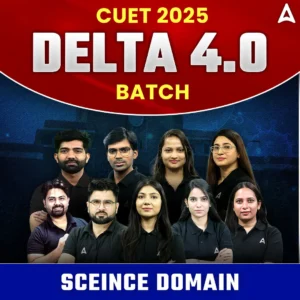Table of Contents

Ncert Solutions For Class 12 Biology Chapter 10 in English
Adda 247 provides NCERT Solutions for Class 12 Biology chapter 10 NCERT solutions which is for the students who want to go ahead in life and achieve great marks in their examinations. The NCERT Solutions for class 12 biology chapter 10 are provided by the teachers who are experts of their subjects. The solutions are set according to the rules formulated by the NCERT class 12 biology and in the language that can be understood by every student. By these reading the solutions students can build up a strong base easily. The NCERT class 12 Biology solutions covers the chapters 1 to 16 with the important questions and the answers in a detailed way.
Examinations can be threatening for some people, a proper learning of the concepts is the key to crack the examination. Students rely on the solutions of the NCERT provided by Adda 247. The solutions are formulated by the experts of the subjects who have tremendous knowledge in their subjects.
These NCERT Solutions of class 12 chapter 10 help the students to get familiarized with the textbooks. The students can access the solutions anywhere while browsing the web easily. The solutions are very precise and accurate.
NCERT Solutions for Class 12 Biology Chapter 10 – Microbes in Human Welfare
The chapter provides information about Human health and diseases. Health can be defined as a state of complete physical, mental and social well-being. Health is affected by three factors- Genetic disorders- disorders which the child inherits from parents from birth. Infections- caused due to pathogens. Life style- includes the habits that we have or lack such as intake of food and water, rest and exercise which we give to our body etc. When People are healthy they are more efficient to work which increases productivity and brings economic prosperity.
[sso_enhancement_lead_form_manual title=”Download Full PDF of Class 12 Biology Chapter 10 ” button =”Download Now” pdf =”/jobs/wp-content/uploads/2021/06/24165127/English-chapter-17.pdf”]
Features of the NCERT Solutions for Class 12 Biology Chapter 10 – Microbes in Human Welfare
NCERT Solutions for class 12 biology chapter 10 have been answered based on the important information on the question.
- The columns are used wherever necessary.
- Solutions are solved point wise and accurately answered point to point.
Important Questions of Ncert Solutions For Class 12 Biology Chapter 10
Question 1. Bacteria cannot be seen with the naked eyes, but these can be seen with the help of a microscope. If you have to carry a sample from your home to your biology laboratory to demonstrate the presence of microbes with the help of a microscope, which sample would you carry and why?
Answer: Curd can be used as a sample for the study of microbes. Curd contains numerous lactic acid bacteria (LAB) or Lactobacillus. These bacteria produce acids that coagulate and digest milk proteins. A small drop of curd contains millions of bacteria, which can be easily observed under a microscope.
Question 2. Give examples to prove that microbes release gases during metabolism.
Answer: Microbes carry out lactic acid fermentation (the anaerobic respiration) and produce carbon dioxide and lactic acid. The puffy appearance of Idli and Dosa dough is due to carbon dixoide released by microbes during fermentation. Likewise, baking industries uses Baker’s yeast that causes rise of batter of cakes and pastries during the process. It is also due to released carbon dioxide during lactic acid fermentation.
Question 3. In which food would you find lactic acid bacteria? Mention some of their useful applications.
Answer: Lactic acid bacteria (LAB) is found in curd. The useful applications of LAB are as follows:
- These bacteria can convert milk into curd.
- LAB are also found in our stomach to check the growth of harmful bacteria in our stomach.
- LAB increases the amount of vitamin B12 in curd. Thus, it makes curd nutritious.
Question 4. Name some traditional Indian foods made of wheat, rice and Bengal gram (or their products) which involve use of microbes.
Answer: Nan, bhature (made from wheat flour), idli, dosa (made from rice flour) and pakoda (made from Bengal gram flour).
Question 5. In which way have microbes played a major role in controlling diseases caused by harmful bacteria?
Answer: Several micro-organisms are used for preparing medicines. Antibiotics are medicines produced by certain micro-organisms to kill other disease-causing micro-organisms. These medicines are commonly obtained from bacteria and fungi. They either kill or stop the growth of disease-causing micro-organisms. Streptomycin, tetracycline, and penicillin are common antibiotics. Penicillium notatum produces chemical penicillin, which checks the growth of staphylococci bacteria in the body. Antibiotics are designed to destroy bacteria by weakening their cell walls. As a result of this weakening, certain immune cells such as the white blood cells enter the bacterial cell and cause cell lysis. Cell lysis is the process of destroying cells such as blood cells and bacteria.
Question 6. Name any two species of fungus, which are used in the production of the antibiotics.
Answer: Antibiotics are medicines that are produced by certain micro-organisms to kill other disease-causing micro-organisms. These medicines are commonly obtained from bacteria and fungi. The species of fungus used in the production of antibiotics are:
Antibiotic – Penicillin Penicillium notatum
Fungus source – Penicillium notatum
Antibiotic – Cephalosporin
Fungus source – Cephalosporium acremonium
Question 7. What is sewage? In which way can sewage be harmful to us?
Answer: Sewage is the municipal waste matter that is carried away in sewers and drains. It includes both liquid and solid wastes, rich in organic matter and microbes. Many of these microbes are pathogenic and can cause several water- borne diseases. Sewage water is a major cause of polluting drinking water. Hence, it is essential that sewage water is properly collected, treated, and disposed.
Question 8. What is the key difference between primary and secondary sewage treatment?
Answer:
| Primary sewage treatment | Secondary sewage treatment |
| It is a mechanical process involving the removal of coarse solid materials. | It is a biological process involving the action of microbes. |
| It is inexpensive and relatively less complicated. | It is a very expensive and complicated process. |
Question 9. Do you think microbes can also be used as source of energy? If yes, how?
Answer: Yes, the microbes present in activated sludge are digested anaerobically to generate a biogas i.e. by release of inflammable biogas in biogas plant, which is a source of energy.
Use of microbial culture for SCP (single cell protein).
Question 10. Microbes can be used to decrease the use of chemical fertilisers and pesticides. Explain how this can be accomplished.
Answer: Various bacteria, fungi and cyanobacteria are used in organic farming instead of chemical fertilizers and pesticides. Biofertilizers are organisms that help in enriching the soil with nutrients.
- Rhizobium, Azospirillum and Azotobacter help in nitrogen fixation and hence, enrich the soil with nitrogen.
- Fungi such as mycorrhiza form symbiont relationship with plants and absorbs phosphorus from soil and passes it to the plant.
- Cyanobacteria help in nitrogen fixation and is an important biofertilizer.
- Blue green algae adds organic matter to the soil.
- Bio-pesticides such as Bacillus thuringiensis produces a toxin that kills the insect pests
- Baculoviruses are bio-pesticide that is used as a biological control agent against insects and other arthropods.
Frequently Asked Questions on NCERT Solutions for Class 12 Biology Chapter 10
What are the advantages of referring NCERT Solutions for class 12 Biology chapter 10?
Students referring the ncert solutions for class 11 biology chapter 10 pdf download by Adda 247 find the solutions helpful during the exams. The solutions are prepared by the experts in an interactive manner keeping in mind the students. The students’ perspective is kept in mind while preparing the solutions. It helps in completing the syllabus on time and also provides notes for the revision prior to the exam.
What are the advantages of referring NCERT in competitive exams like JEE and AIPMT?
Most of the competitive exams like NEET, JEE etc. follow the basic NCERT books for designing their question papers. NCERT serves as the base for every book prepared for NEET and JEE. The competitive exams are based on the CBSE syllabus applied in XI and XII classes and NCERT books strictly follow CBSE syllabus. In addition to this, NCERT books play an important role in clearing out the theoretical concepts. Every topic given in NCERT books is explained in such a way to help students make their basics and fundamentals strong and clear.
How To Use NCERT Solutions For Class 12 Biology?
- Study the chapter topic wise and understand the various concepts.
- First, try to solve the questions by yourself and then look at the solutions.
- Use them as a reference guide while revising the chapter.
- If you get stuck at any question, you can check the step by step solution from the PDF from ncert solutions for class 11 biology chapter 10 pdf download by Adda 247.
.
Is it mandatory to solve all the NCERT questions mentioned at the end of each chapter?
The questions and answers mentioned in NCERT textbooks at the end of each chapter are quite important not only for examination but also for understanding the concepts in a better way. These questions aim to test the students’ understanding and learning over the topics that they have learned in the chapter.
Solving the NCERT exercise problems will help to
- clear all the concepts and formulae you learned in a chapter
- get comfortable with different types of questions that might be asked in exams
- get enough practice which is key to succeed in Mathematics exam
- improve your accuracy and speed
What are the important concepts covered in the Chapter 10 of NCERT Solutions for Class 12 Biology?
The concepts involved in the chapter 10 of NCERT Solutions are –
10.1 – Microbes in Household Products
10.2 – Microbes in Industrial Products
10.3 – Microbes in Sewage Treatment
10.4 – Microbes in Production of Biogas
10.5 – Microbes as Biocontrol Agents
10.6 – Microbes as Biofertilizers
These concepts are created by the faculty at Adda 247. The solutions are available at Adda 247 in the PDF format which can be downloaded by the students.



 CBSE Class 12 Hindi Expected Question Pa...
CBSE Class 12 Hindi Expected Question Pa...
 The Scientific Daily Routine for Student...
The Scientific Daily Routine for Student...
 CUET Maths Syllabus 2025 PDF, Pattern, B...
CUET Maths Syllabus 2025 PDF, Pattern, B...








